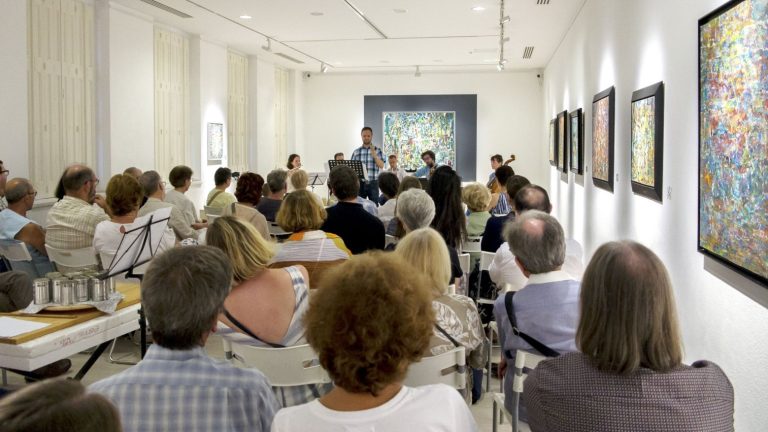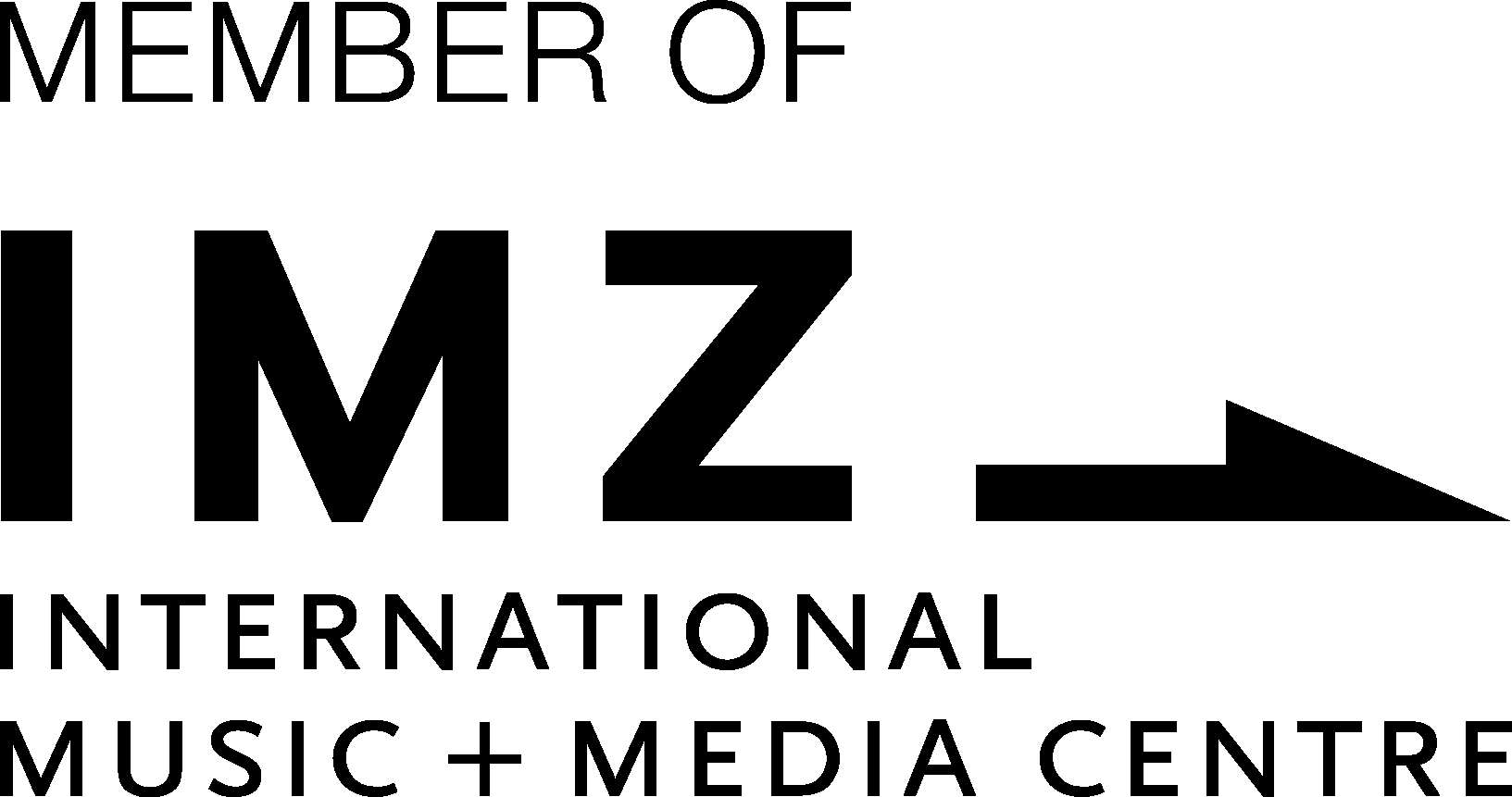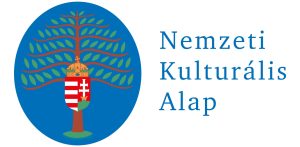“Not everyone can enter Rozsda’s inner universe,” stated the recently departed French painter Françoise Gilot (1921-2023). “There are false entrances and false exits … [constituting a] timeless vision that he rarely invites us to explore … it is up to us to discover and see the truth behind the mental play of his mirrors.”
Gilot was talking about her friend and colleague, the Hungarian painter Endre Rozsda (1913-1999) whose career took a bold turn after he heard a performance of Bartók’s Sonata for Two Pianos; from that point on, he found his true voice as a surrealist, creating densely crafted and wildly colorful canvases.
For the Várfok Gallery’s second round of collaborative efforts for musicians to align their inspirations with visual art, four composers and six instrumentalists produced musical reflections on paintings by Rozsda. Two days before the exhibition of his works closed on July 15, art and music enthusiasts attended the concert in the gallery, featuring four different compositions by Máté Balogh, Péter Tornyai, Marcell Dargay, and Balázs Horváth, each of whom chose a painting (or for Tornyai, a group of paintings) to reinterpret them through their own musical languages. Some of Budapest’s finest players of contemporary music: violinist Oszkár Varga, cellist Ditta Rohmann, flutist Zsófia Réman, clarinetist Zsolt Bartek, and percussionist János Nevelő, performed the new works.
Rozsda’s kaleidoscopic abstract oils from his post-Bartók experience not only provide a stark contrast to his earlier works (similar to the career trajectory of the career of Picasso, his friend and contemporary), but offer us an almost dizzying terrain of apparitions and fevered dreams — a kinetic world that almost jumps off the canvas. To say these four composers entered Rozsda’s universe would be an understatement; all four somehow managed to inhabit his visual world not only through sound, but also with humor, energy, and innovation.
Beginning with the solo sound of a cabasa shaker, Máté Balogh gave his “Eine kleine Stadtmusik” a party feel, then added pizzicatos and a bongo to build an increasingly spiky texture inspired by the painting “Ville.” Balogh explained: “This painting reminds me of Keleti Pályaudvar and also the big, old cities of Europe.” In a surprise move, Balogh himself strode forth from the back of the room, announcing in stentorian German: “es gibt eine kleine Stadtmusik!” and continued speaking until he reached a breathy pianissimo. His quirky soundscape cleverly extracted the inherently noisy but joyous universe in Rozsda’s intense canvas.
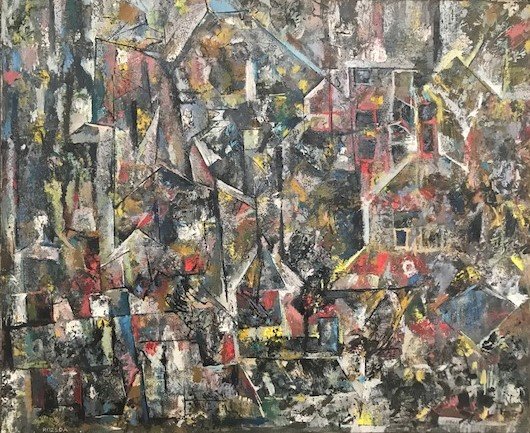
Péter Tornyai’s piece “Je pose ma tête sur le temps” arises from a quote from Rozsda himself, which suggests we could sense the passage of time from different perspectives. Employing a drumstick tapping on 13 metal cans placed on a circular disc that continually rotated (occasionally reversing directions), Tornyai “tried to change the perception of time,” as he explained beforehand. Against this ominous tick-tock which emanated from the central aisle within the audience, the instrumental ensemble played amorphous sustained lines within and around that drumbeat. Rohmann’s crystalline soprano voice then added a wordless, ghostly effect to add another layer to the intermittently interrupted cosmic clock. As Rozsda wrote: “All things are indeterminable.” This tantalizing atmosphere could easily have been the subtitle for his painting “Bluebeard’s Castle.”
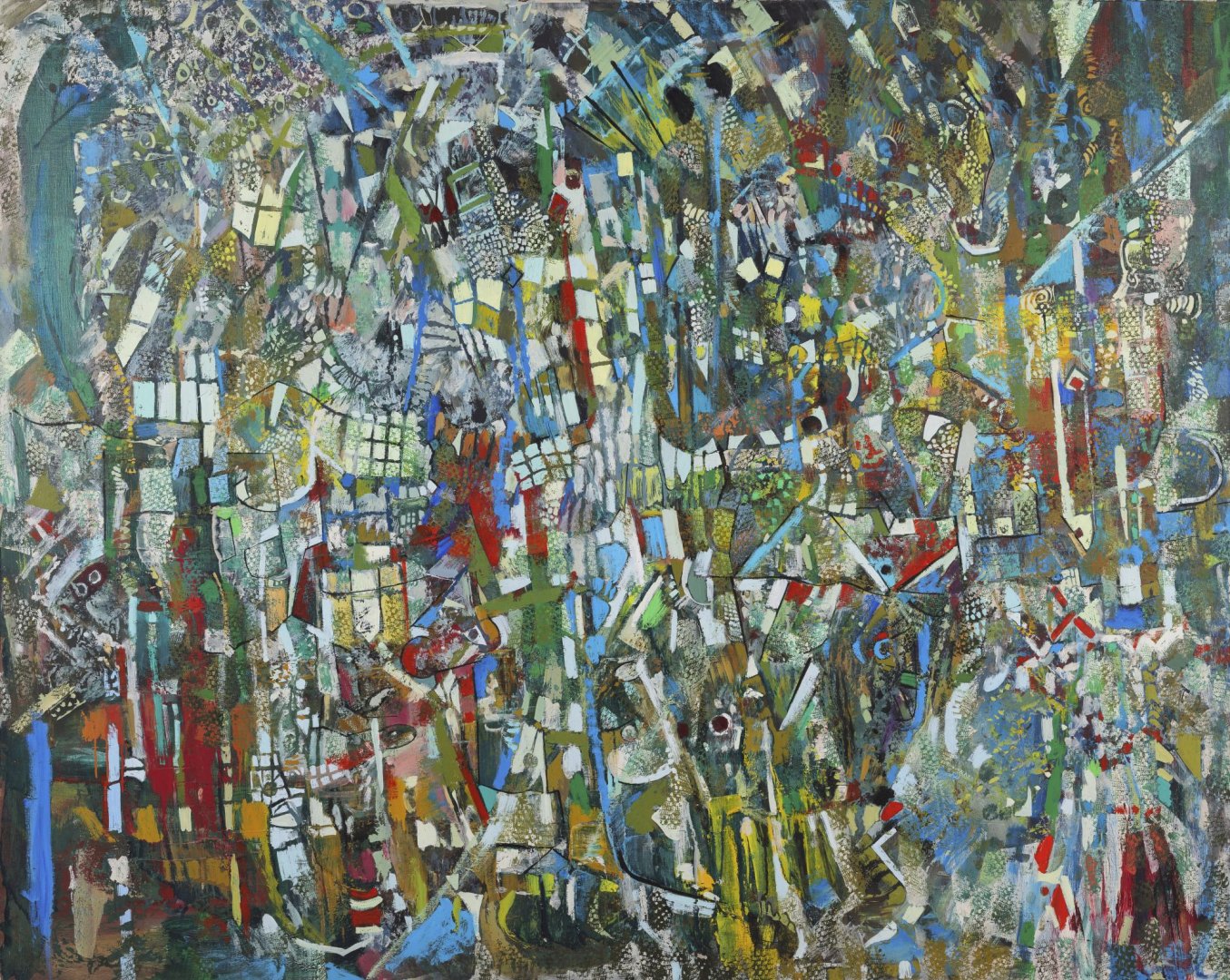
Marcell Dargay chose “Friends” for his sound painting “Visages Visible – Visage Invisible” by creating a swarm of various instrumental voices that walked around the space as they played — all of which was recorded on a phone. For the second section, the recording was added to the live instruments as another complex voice in itself, enriching and developing the sense of community.

In addition to Rozsda’s art, Balázs Horváth paid tribute to Gilot, “whose work exemplified the era, and she serves as a guide to his work.” In his “Charleston for Rozsda,” Horváth explained: “I imagined myself as a scanner, so it gives me positional options” in his re-imagining the Jazz Age’s hedonistic hysteria of society’s escape from the previous prurient strictures. By using cowbells, used shoes, a wooden plank, wine glasses and bottles, the sounds of traffic, and direct references to the Charleston dance rhythms throughout, Horváth effectively captured the spirit of the painting “Charleston.”
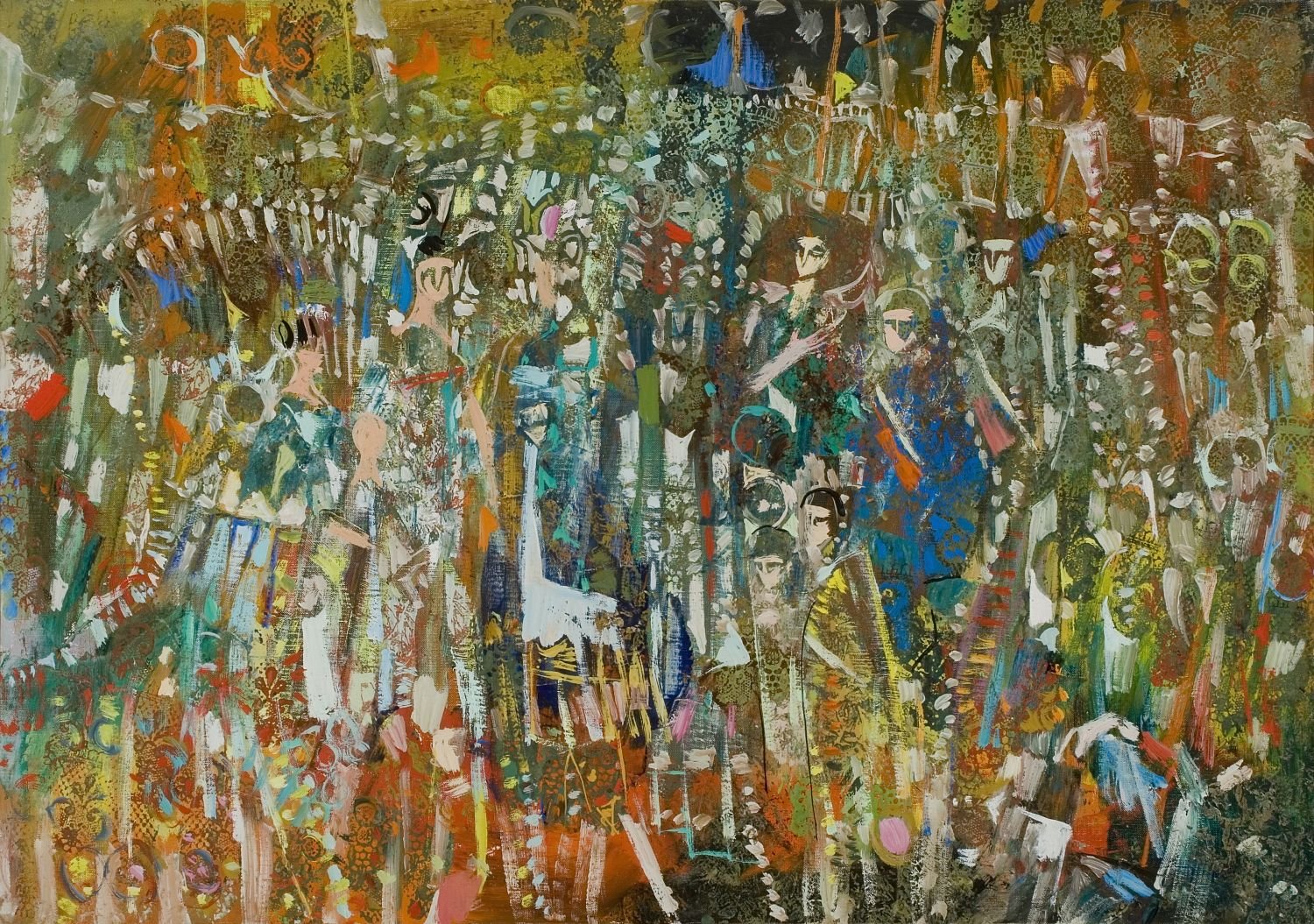
The July 13th concert was sponsored by the House of Music, the NKA (National Cultural Fund), and four private art collectors who directly supported the four composers. Várfok Gallery’s director, Krisztina Kovács, explains:
“I put [these collectors] in pairs, knowing their personalities and styles. I tried to find people who will like each other with the hope that these collectors can be involved more in the musical field. This kind of generous act can be a good example for others, as I believe that this is what the musical scene needs: private patronage, as there is less and less money [provided by] the state.” By offering this kind of unique opportunity at Várfok Gallery, Kovács believes “other artists can discover other artists’ work.”

